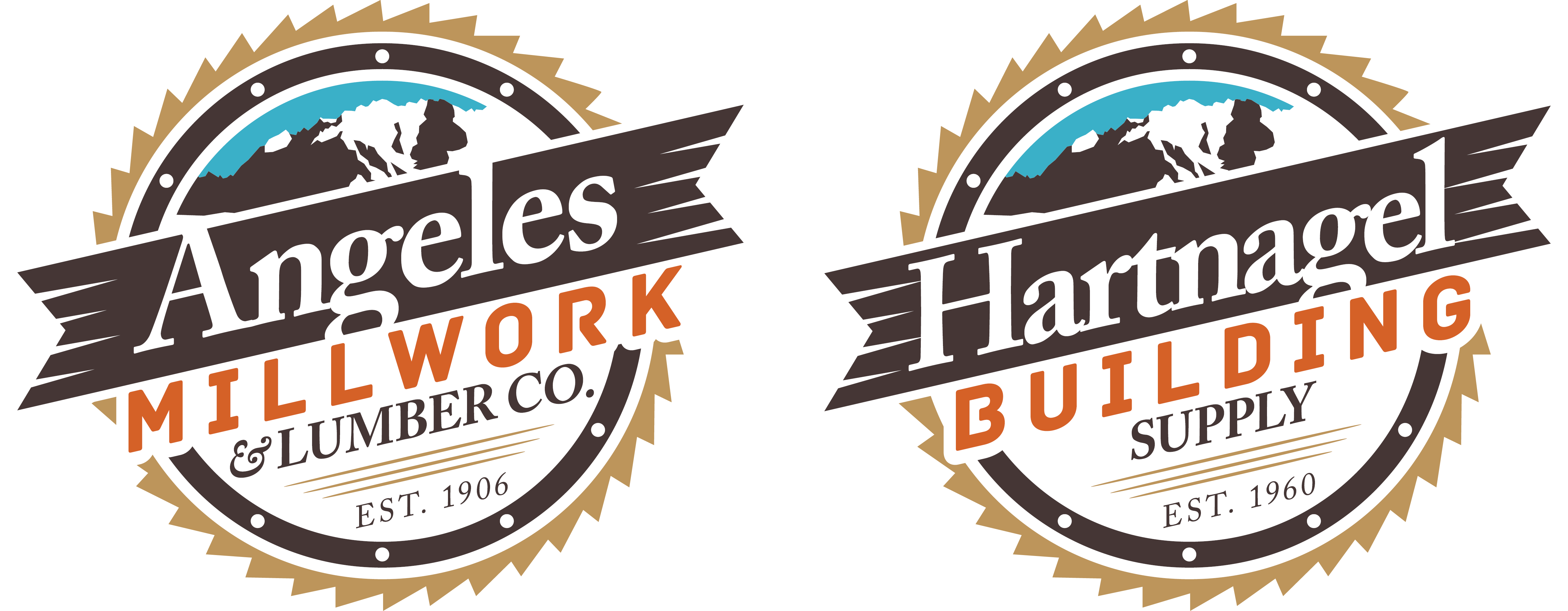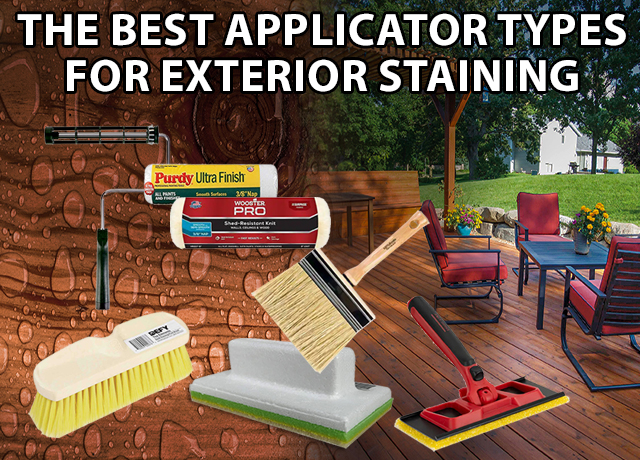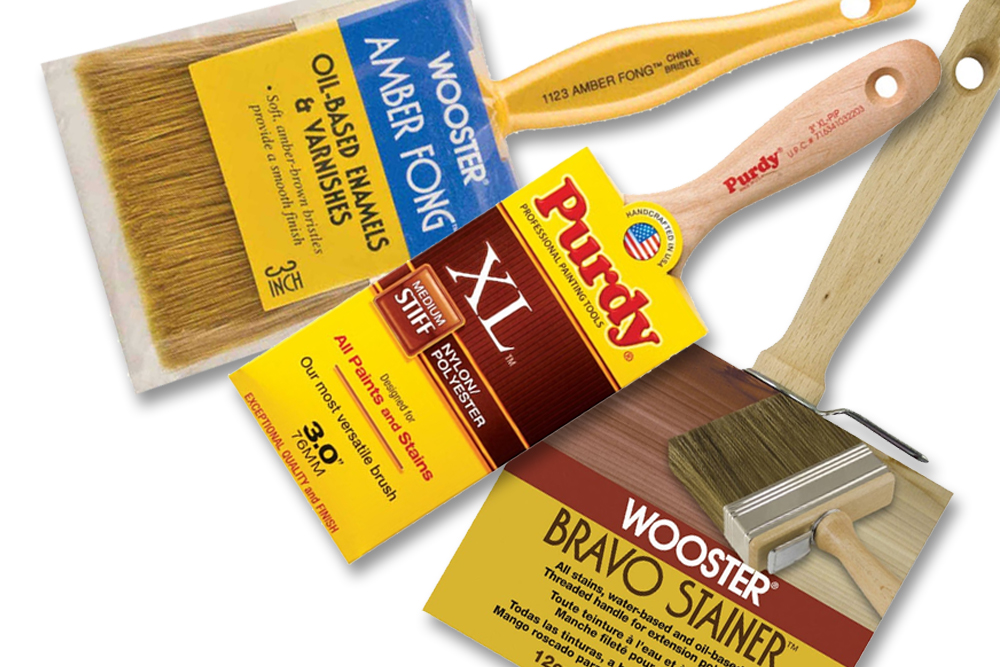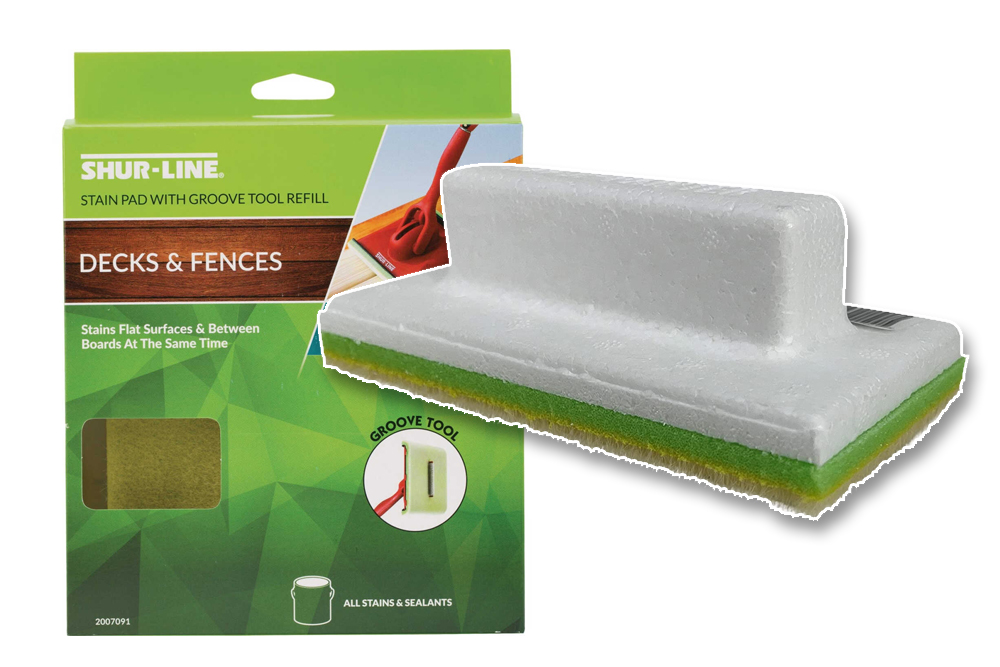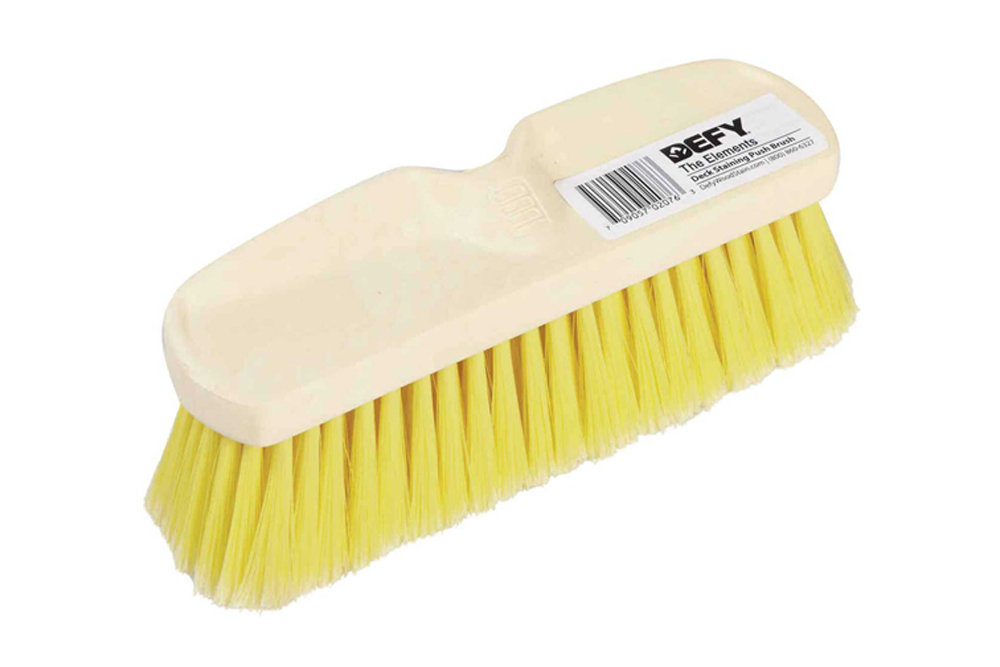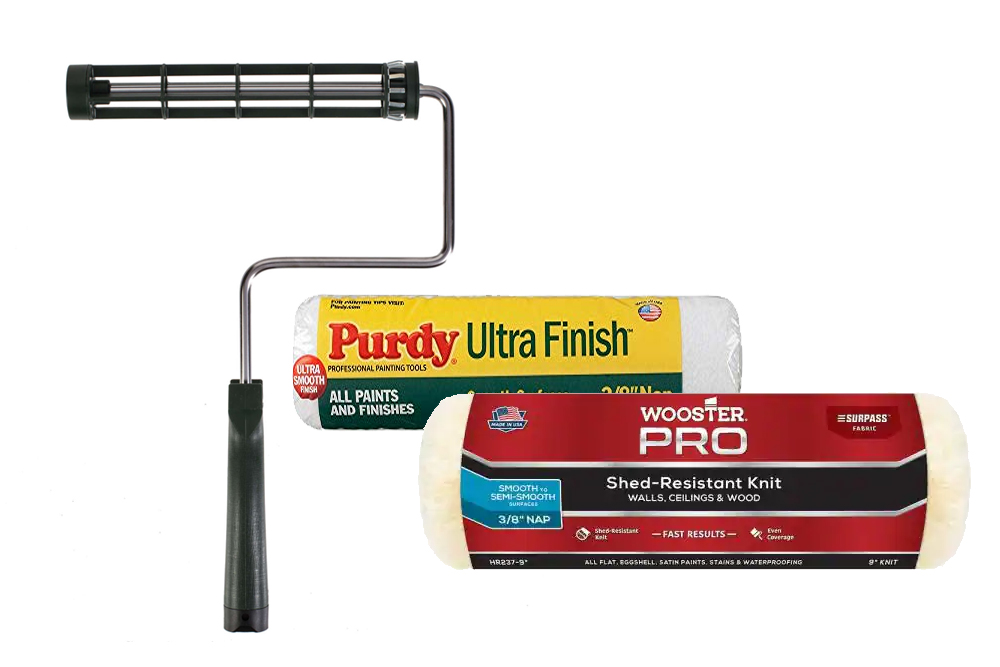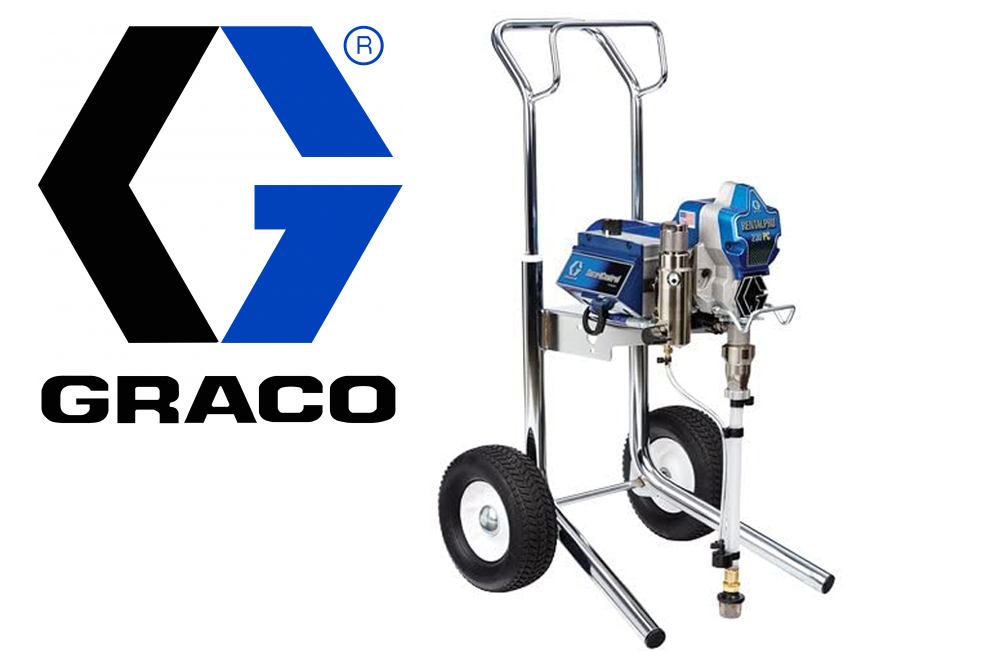The Best Applicator Types for Exterior Staining
Using the proper tools to stain your wood deck is half the battle.
There are various applicator options to choose from to give you a professional, efficient result. Our favorite deck staining tool is stain pads, but we’ll break down some of the best options!
DECK STAIN BRUSH
Have you ever seen one of those giant square brushes in the brush aisle? It was probably a deck stain brush.
These 4 to 6-inch brushes are used to back brush large areas to ensure an even finish. A smaller white China bristle brush, or any other natural brush for oil-based stains, works perfectly for cutting edges and other tight spaces.
Note: If applying a water-based or hybrid stain, make sure you use synthetic bristle brushes for the best result.
DECK SPEED MOPS AND STAIN PADS
A stain applicator pad or mop is a fast, effective option for large surface areas. They hold a lot of stain due to their absorbent fibers, they are easy to use, and they don’t shed, lending to a flawless and even staining result.
Use a simple, sweeping motion to work the stain into the wood. They generally all come with replacement pads, too, should you need one.
Note: The only disadvantage to a pad or mop is that they aren’t great at reaching in between the deck boards.
DECK STAIN FLOORING BRUSHES
Another excellent option for large surfaces.
You get all the advantages of a hand stain brush but with better coverage. They attach to a threaded pole, and you can apply the stain similarly to how you’d mop a floor. This application method fills boards and cracks in one swoop and works well on smooth and rough surfaces.
PAINT ROLLERS
You can use a paint roller to apply deck stain in a pinch, but it isn’t necessarily the best option.
Paint rollers aren’t designed to hold deck stain, so you’ll be dipping back into your stain bucket more often than actually rolling the stain out. You may also need a separate roller for back brushing. If you go this route, choose a natural fiber for oil-based stains, like lambswool, and synthetic fibers like polyester or foam for water-based or hybrid stains.
Tip: If using a lambswool cover, remove any loose fluff with a few passes of masking tape or a shop vac before use, so you don’t have to worry about lint later!
Note: Choose a nap length that will work best for your project. 3/16 to 1/4 inch roller covers are suited for smooth surfaces. 3/8 to 1/2 inch roller covers work best on lightly textured surfaces, and 3/4 inch or thicker covers are used for rough surfaces, such as weathered exterior wood.
PAINT SPRAYER
Spraying a stain is an excellent way to achieve a quick, uniform result; however, there is a BIG operational learning curve, and messy overspray is guaranteed. If you haven’t used a paint sprayer before our advice is not to start learning while staining and to spare yourself the headache and leave the sprayers to the professionals.
If you think this is an avenue you’d like to try, start by clicking HERE for Graco’s instructions on how to stain a deck with a paint sprayer.
Our paint department sells paint sprayers and we’re happy to educate you on their uses. If you’d like to avoid investing in a paint sprayer for just a few projects you can rent and reserve one today at Angeles Rentals by clicking HERE.
IN CLOSING
For best results don’t feel limited to one type of applicator! If you want to use a roller or pad on the large surface areas of your deck but want to get into all of the nooks & crannies with a small bristle brush, go for it! Whatever you need to do to help the stain penetrate the wood, the better.
When stain soaks into the wood, the product creates a barrier that guards against sun and rain damage. This coating is your deck’s first line of defense, so we hope this quick guide helps ensure you do it right and your deck lasts for years to come!
